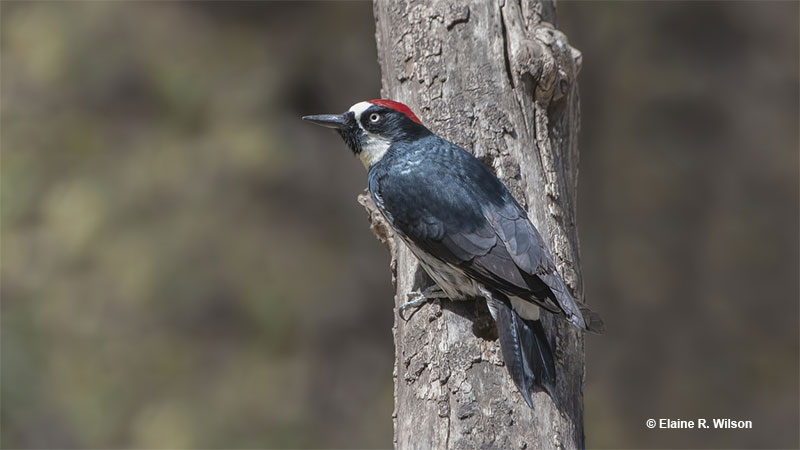
Do blue woodpeckers exist? Once in a while, we hear about someone seeing a “blue woodpecker.” The only problem is there aren’t any blue woodpeckers!
I admit, I have done a double take after seeing a Blue Jay come to a feeder and perch like a woodpecker. However, that was only for a second, and it was pretty easy to realize that, no, I was only seeing a funny-looking Blue Jay.
Admittedly, thanks to AI, images of woodpeckers with blue plumage probably do exist. In real life, though, there’s no such thing.
Can some blue birds be confused with woodpeckers? How can you know if a bird is a woodpecker or not? See this article for answers to these questions and more about the phenomenon of a blue woodpecker!
On this page
The Mystery of Blue Woodpeckers
The idea of a blue woodpecker is a real mystery because none of the 235 known species of woodpeckers have blue feathers. A few species have gray coloration, and several woodpeckers outside of North America have some olive or green in their plumage, but none are blue.
Learn more: Woodpecker Species You Can See (U.S.)
In The USA and Canada, woodpeckers are either mostly black and white, or tan and buff with black markings (the flickers). One other species, the Arizona Woodpecker, has mostly dark brown plumage, but it is still easily recognized as a woodpecker.
In general, in North America, it’s pretty easy to know when a bird is a woodpecker. All have straight, chisel-like beaks, and most cling to and hitch up tree trunks.
Most woodpeckers also use their strong beaks to peck into the branches, stems, and trunks of trees. Unfortunately, some also peck on the wooden siding!
Flickers are the exception. These fair-sized birds feed on the ground, but we can still recognize them as woodpeckers by the shape of their beaks.
In flight, woodpeckers might even be easier to identify. Nearly all species, flickers included, have a bounding flight pattern where they seem to bounce up and down as they move through the air.
Birds That Can Be Mistaken For Blue Woodpeckers
Blue Jays

These pretty birds are sometimes mistaken for being woodpeckers! Look at a picture of a Blue Jay, and that might seem hard to believe, but in nature, they don’t always look like the illustration in the book.
Blue Jays don’t usually perch or act like woodpeckers, but they do visit feeders and eat some of the same types of food.
They also have stout beaks and when they use them to peck into acorns and other nuts, they can be mistaken for being a woodpecker.
Related: Are blue birds really blue?
However, with a closer look, we can see that Blue Jays have long tails, a feature not shared with woodpeckers.
Steller’s Jays
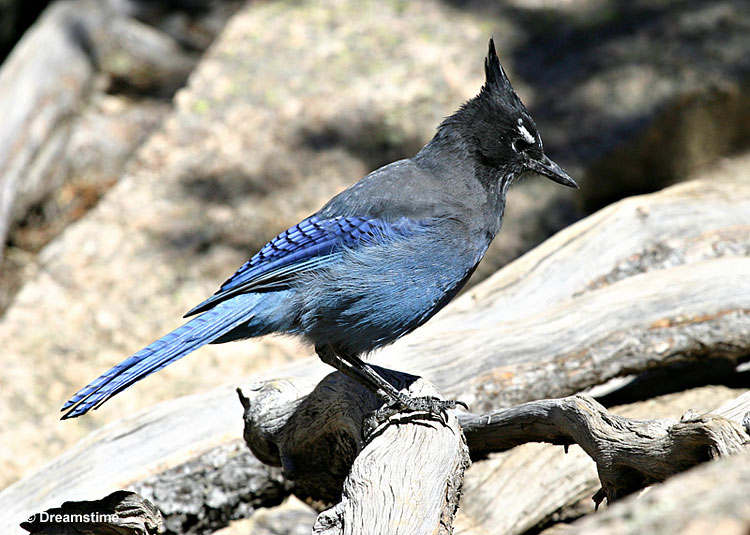
This western counterpart of the Blue Jay is also sometimes misidentified as a woodpecker. Like the Blue Jay, it also visits feeders and eats many of the same foods as woodpeckers do. Like woodpeckers, it can also use its strong beak to hammer at nuts.
The fact that Steller’s Jays have a crest can also throw people for a loop. Although only one main woodpecker in North America has a crest (the Pileated Woodpecker), the only woodpecker most people know, “Woody Woodpecker,” also has a big crest. They see a good-sized, blue bird with a crest and think, “I just saw a blue woodpecker!”.
Common and Belted Kingfishers
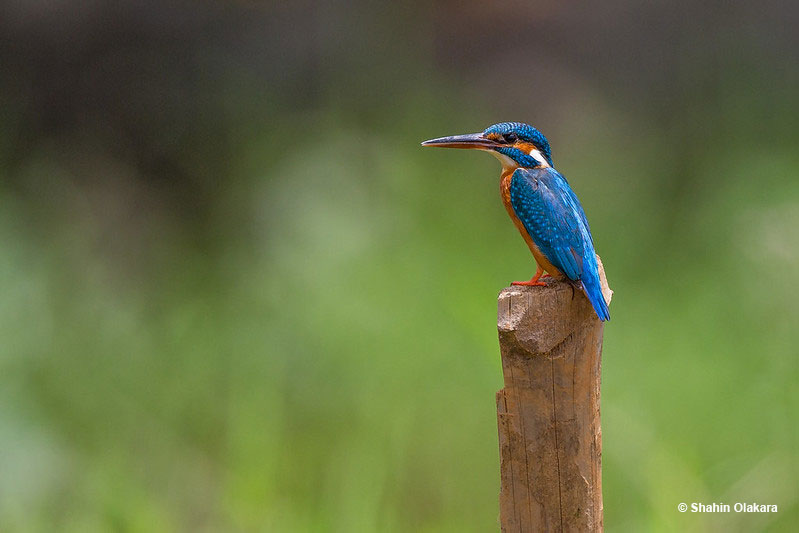
Common Kingfisher (found in Europe and Asia). © Shahin Olakara
At first, it might seem odd to confuse kingfishers with woodpeckers. However, when we take a look at the beak of a kingfisher, it’s easy to see why some people spot a kingfisher and wonder if they are seeing a woodpecker.
Most kingfishers have oversized, heavy, straight beaks. Although bigger than woodpecker beaks, they have a somewhat similar shape.
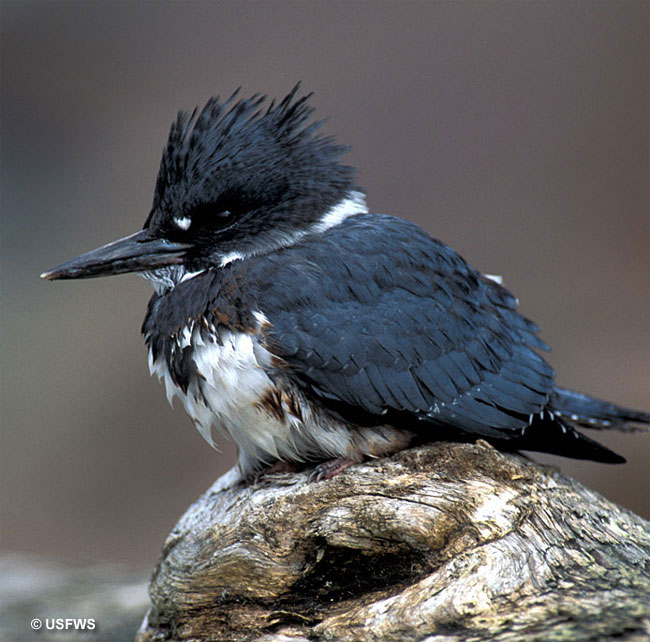
Belted Kingfisher
If some people see a Eurasian (Common) Kingfisher, they also see the bird’s blue plumage and wonder if they saw a blue woodpecker. In North America, the same goes for sightings of the Belted Kingfisher, a crested bird with blue-gray colors.
Eastern Bluebird
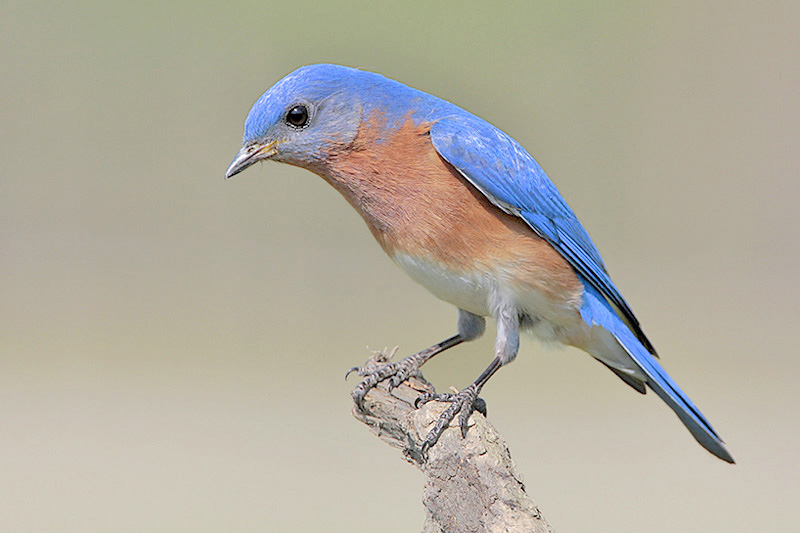
Photograph © Greg Lavaty.
Oddly enough, Eastern Bluebirds are occasionally confused with woodpeckers! These small thrushes don’t have big beaks nor do they look like woodpeckers in other ways. They have quick swooping flight and aren’t shaped like woodpeckers at all.
However, like woodpeckers, bluebirds do nest in holes. When a bluebird comes to a nest box or tree cavity, it can also vertically perch at the hole entrance. We see this very woodpecker-like posture and can wonder if we are looking at a blue woodpecker!
A closer look reveals the truth, but if we don’t have binoculars and the view is brief, it’s easy to wonder what we really saw.
Tufted Titmouse
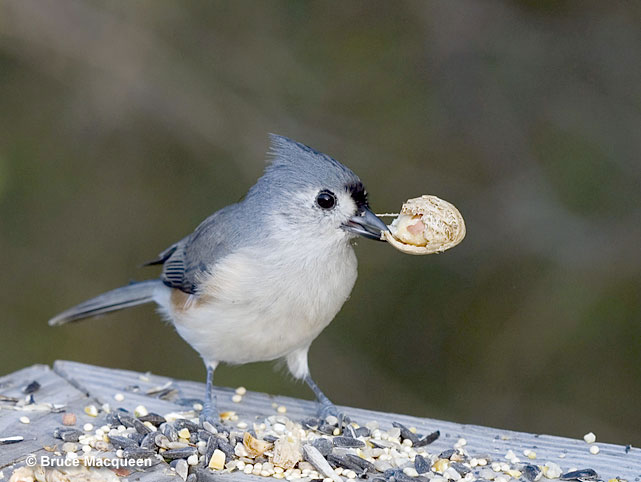
This sparrow-sized bird has a unique crested look and some behaviors that are reminiscent of woodpeckers. Since it also has blue-gray upperparts, it may be a “blue woodpecker” that people claim to see.
Although Tufted Titmouses usually perch like other songbirds and not like woodpeckers, they can also perch vertically, especially at a nest box or nesting hole.
Like woodpeckers, they also visit feeders to feed on suet and nuts. In addition, this tough little bird uses its beak to hammer into nuts, sort of like a woodpecker does. However, it doesn’t have a straight bill nor other typical features of woodpeckers.
White-breasted Nuthatch
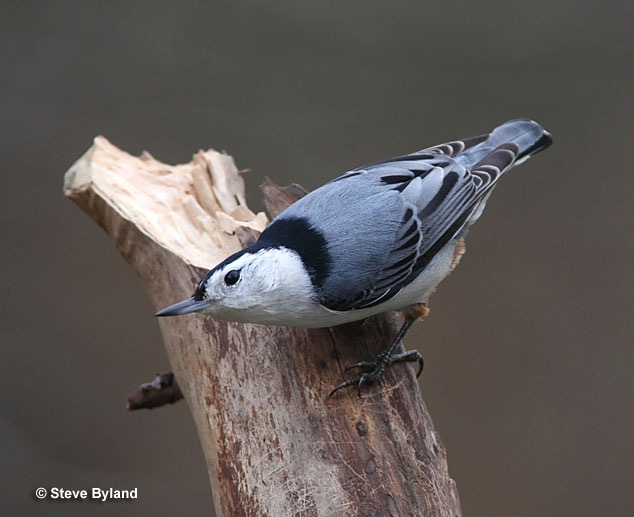
This is another cute, blue-gray songbird with some woodpecker-like traits. Like woodpeckers, White-breasted Nuthatches creep along branches and can perch vertically. However, instead of ascending a tree, they usually descend down the trunk headfirst!
They also have a long, sharp, pointed beak, but they don’t use it to peck like a woodpecker does.
Like woodpeckers, White-breasted Nuthatches also nest in tree cavities, but we can recognize them with other features.
This species has black on its head but still lacks the black and white pattern shown by most North American woodpeckers. It also has a much shorter, squared tail.
Facts
- Black and white patterns are the most commonly seen plumage in North American and Eurasian woodpeckers. The contrasting colors may act as disruptive camouflage as they forage on tree trunks in forested habitats.
- A small number of woodpecker species from South America and southern Asia have beautiful red upperparts and yellow underparts!
- In tropical regions, olive and red-brown plumaged woodpeckers are also typical. Their colors may help them blend into certain types of tropical vegetation.
- Many woodpeckers have red heads or patches of red on their heads. In adult birds, these bits of bright color are more common in males and could be related to displays for finding a mate.
- Several woodpecker species also have color on their bellies. Although the yellow on the underparts of sapsuckers is easy to see, the red on the Red-bellied Woodpecker can be tough to spot.
- Several small woodpecker species have plumage that looks just like the plumage of larger, unrelated species. We see this in the Downy and Hairy Woodpeckers. The smaller Downy Woodpecker may have evolved to resemble the larger Hairy Woodpecker to mimic the Hairy and avoid being chased away.
- Many woodpeckers also have white or pale patches on their wings. These patches are sometimes only visible in flight and might be used in courtship or displays to try and scare predators away.
Frequently Asked Questions
Are there any blue woodpeckers?
No, there aren’t any blue woodpeckers. No woodpecker species have blue in their plumage.
What color are woodpeckers usually?
Woodpeckers are usually black and white with a bit of red on their heads. They can also be tan or gray, and several tropical woodpecker species are dull green, red-brown, or even red and yellow.
What is the most common woodpecker?
The most common woodpecker is the Northern Flicker. This tan and pale brown species with small black markings is a common bird of parks and other habitats in most parts of North America.

